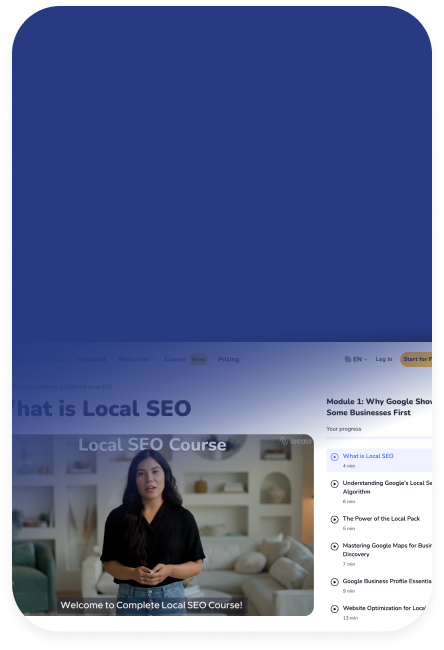
Ready to get more customers calling?
Take FREE Local SEO Course
Available now in English
Q&A section - this feature is available on many online platforms, including product pages, social networks, apps and company profiles on services such as Google my business. It allows users to ask questions about products, services, companies, or various topics and then receive answers from other users, industry experts, or company representatives.

Why is the Q&A section crucial?
The Q&A section is essential for several reasons:
- Customer interaction: Allows direct communication between the company and customers, which fosters trust and loyalty.
- Collecting feedback: Provides valuable data on customer needs, questions and concerns, which can help develop products and services.
- Purchasing decision support: Answering questions can help potential customers decide.
- SEO and visibility: Questions and answers often include keyword phrases that can improve a website’s positioning.
- Reduction in service department workload: Common questions and answers can reduce the number of similar queries directed to the customer service department.
- Community building : A Q&A section can contribute to creating a community around a brand where users support each other.
- Transparency: Public answer questions show the company’s openness and willingness to engage in dialogue.
Preparation of the own FAQ page design
Preparing a FAQ (Frequently Asked Questions) section on your website is crucial to building good customer service:
- Collect frequently asked questions: Analyse customer questions, customer service data, emails, chats, and social media to identify the most commonly asked questions (use Google Keyword Planner or another tool).
- Group questions: Categorise questions by topic.
- Formulate clear answers: Write short, concise and understandable answers to a specific question.
- Structured FAQ Page: Decide whether you want all questions to be visible already at the browsing stage of the search results or whether they will only unfold when the question is clicked.
- SEO optimisation: Include keywords in the questions and answers to improve the visibility of the section in search engines.
- Testing : Test the FAQ section to ensure it is intuitive and all links work correctly.
- Update: Update the FAQs regularly to keep the information up to date and reflect changes in your offerings or policies.
- User Feedback: Consider adding a feedback option next to each question so users can assess the usefulness of the answer.
Where can an FAQ section be added?
The best FAQ pages can be placed in several strategic locations on websites to increase its visibility and accessibility for users:
- Dedicated FAQ page: FAQ page examples are often on a separate page that can be easily accessed from the main menu, the footer of the page, or a direct link in the ‘Help’ or ‘Support’ section.
- Home page: A short FAQ section can be placed on the homepage if the questions relate to general information about the company or products.
- Product/service pages: The most successful FAQ pages relating to specific products or services can be placed directly on the relevant product/service pages to provide users with detailed information.
- During the purchase process: During the ordering process or on shopping cart pages to address customer concerns and reduce abandoned baskets.
- Page footer: A link to the good FAQ page in the footer of the page is standard practice, as users often look there for support information.
- Help centre: If the site has an extensive help centre or knowledge base, FAQs can be part of this section.
- Popups and modals: Pop-ups with FAQs can be helpful when a user performs certain actions on a page.
Q&A section in online marketing
The Q&A section is significant in online marketing as it offers a direct platform to communicate with customers. Through the Q&A section, companies can better get to know the needs of their customers, allowing them to optimise their offerings and services. As a result, the Q&A section is a valuable part of an SEO strategy and can contribute to increasing organic traffic to a website.
![What is Q&A - Definition [Marketing Dictionary]](/assets/img/dictionary-background.webp)
